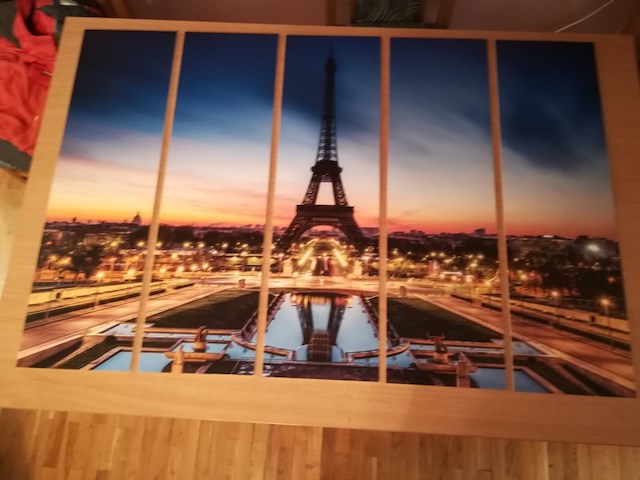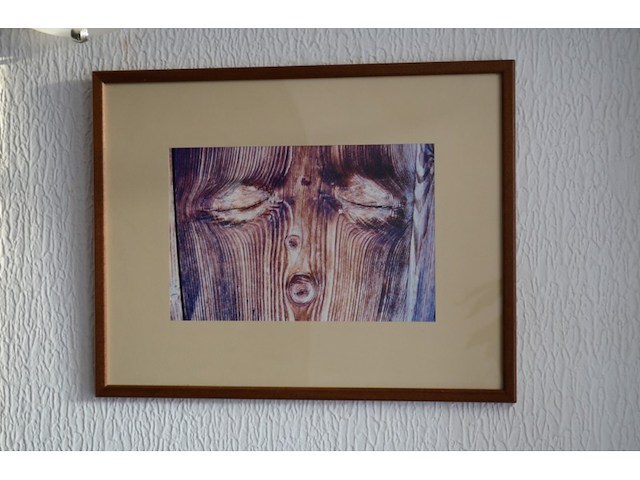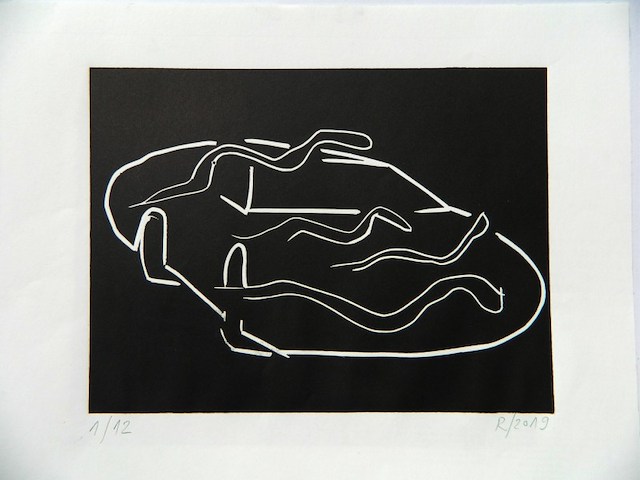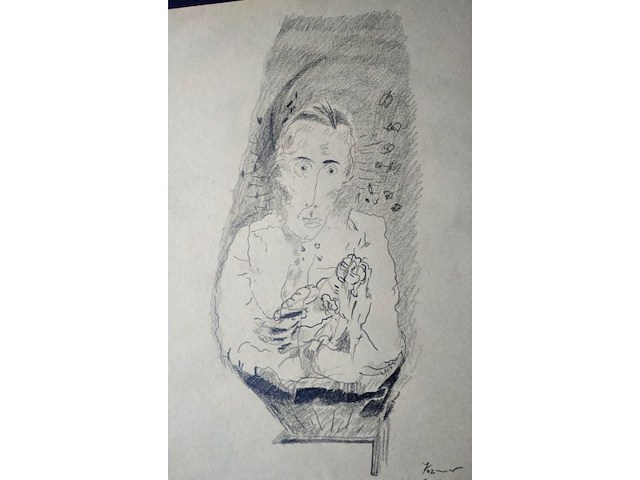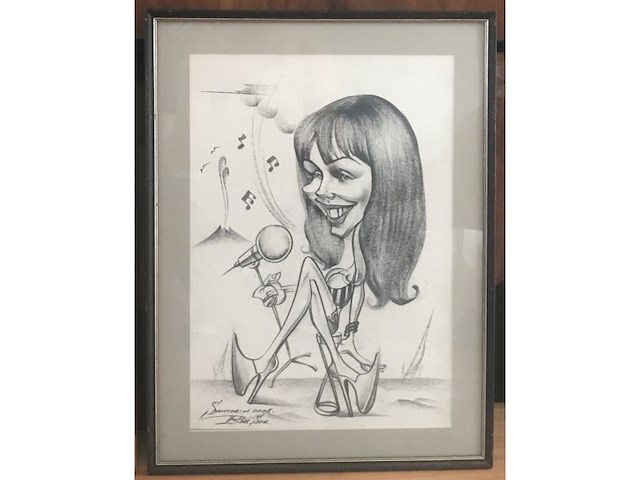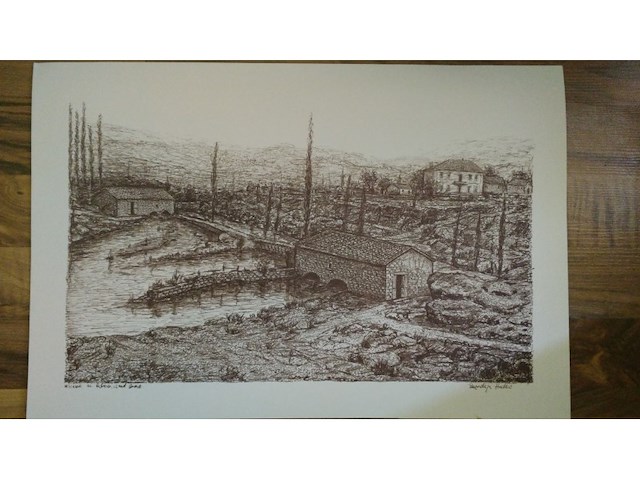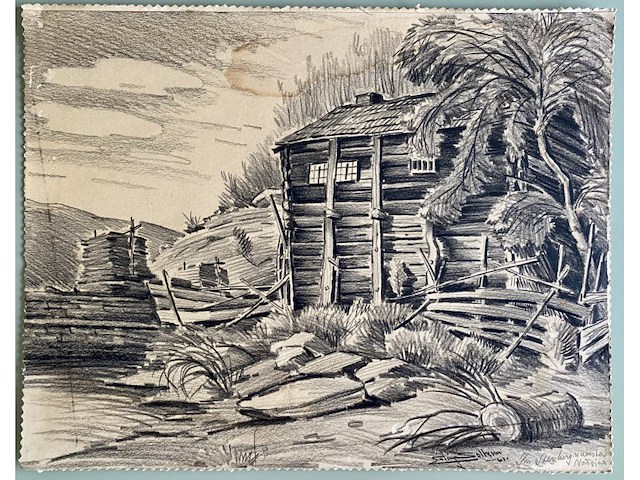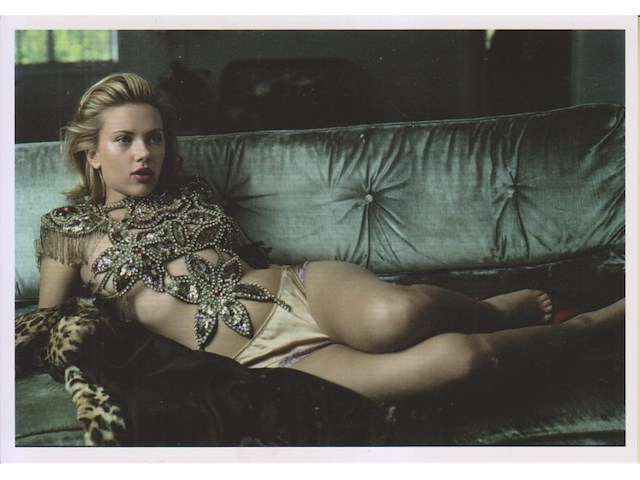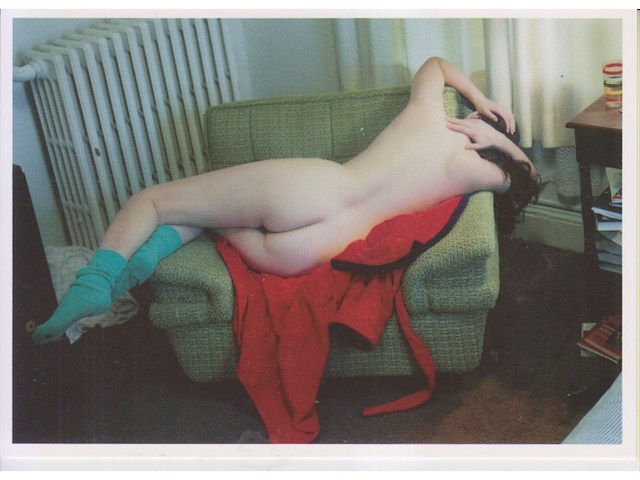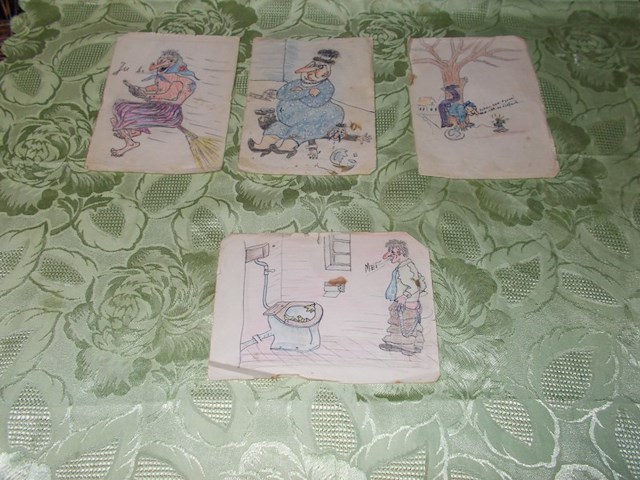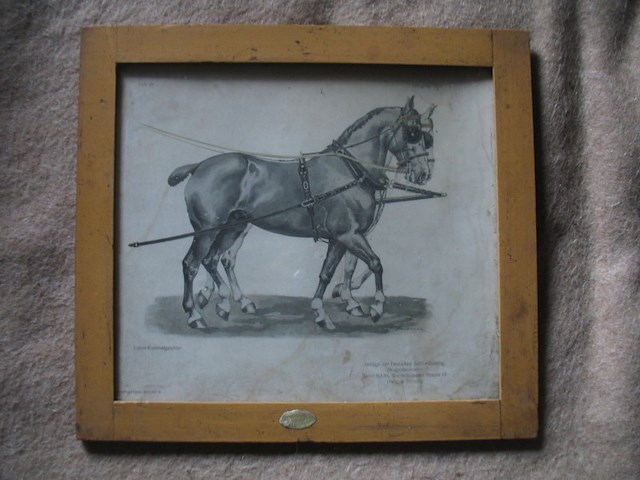Pratite promene cene putem maila
- Da bi dobijali obaveštenja o promeni cene potrebno je da kliknete Prati oglas dugme koje se nalazi na dnu svakog oglasa i unesete Vašu mail adresu.
101-125 od 217 rezultata
Režim promene aktivan!
Upravo ste u režimu promene sačuvane pretrage za frazu .
Možete da promenite frazu ili filtere i sačuvate trenutno stanje
Grafika Mlinovi na Ribnici, akademika Zuvdije Hodžića, dimenzija 40x32 cm. * Ukoliko šaljem poštom na cenu slike se dodaje i 100 din. za kartonsku tubu za slanje koju moram da kupim u pošti kako se slika ne bi oštetila * Zuvdija Hodžić (1944.) živi u Podgorici. Hodžić podseća na stare majstore - gravere, kujundžije, a njegove grafike na filigran u koji je utkano bogato strpljenje, mnoštvo volje i rafiniranih detalja. Kao što su stari majstori uživali u svom poslu, tako i on uživa u oživljavanju starih prostora, zaboravljenih ambijenata, s uverenjem da to oplemenjuje ljude i odvlači ih od naporne svakodnevnice... Hodžićevi crteži su uraženi strpljivo, pedantno, s delikatnim osećajem za okolni prostor spomenika koje crta. Na njima nema ni ljudi ni zbivanja, lišeni su svakog detalja koji bi podsetio na nekadašnji i tekući život.
str. 103 30 x 24 cm fotografije nastale dok je ziveo u madjarskoj ODLICNA KNJIGA André Kertész (2 July 1894 – 28 September 1985), born Andor Kertész, was a Hungarian-born photographer known for his groundbreaking contributions to photographic composition and the photo essay. In the early years of his career, his then-unorthodox camera angles and style prevented his work from gaining wider recognition. Kertész never felt that he had gained the worldwide recognition he deserved. Today he is considered one of the seminal figures of 20th century photography. Expected by his family to work as a stockbroker, Kertész pursued photography independently as an autodidact, and his early work was published primarily in magazines, a major market in those years. This continued until much later in his life, when Kertész stopped accepting commissions. He served briefly in World War I and moved to Paris in 1925, then the artistic capital of the world, against the wishes of his family. In Paris he worked for France`s first illustrated magazine called VU. Involved with many young immigrant artists and the Dada movement, he achieved critical and commercial success. Due to German persecution of the Jews and the threat of World War II, Kertész decided to emigrate to the United States in 1936, where he had to rebuild his reputation through commissioned work. In the 1940s and 1950s, he stopped working for magazines and began to achieve greater international success. His career is generally divided into four periods, based on where he was working and his work was most prominently known. They are called the Hungarian period, the French period, the American period and, toward the end of his life, the International period. Andor Kertész was born on 2 July 1894 in Budapest to the middle-class Jewish family of Lipót Kertész, a bookseller, and his wife, Ernesztin Hoffmann. Andor, known as `Bandi` to his friends, was the middle child of three sons, including Imre and Jenő. When Lipót died in 1908 from tuberculosis, the widowed Ernesztin was without a source of income to support their three children. Ernesztin`s brother, Lipót Hoffmann, provided for the family and acted much like a father to the boys. The family soon moved to Hoffman`s country property in Szigetbecse. Kertész grew up in a leisurely pace of life and pastoral setting that would shape his later career path. Hoffman paid for his middle nephew`s business classes at the Academy of Commerce until his 1912 graduation, and arranged his hiring by the stock exchange soon after. Unlike his older brother Imre, who worked at the exchange in Budapest for all his life, Kertész had little interest in the field. He was drawn to illustrated magazines and to activities like fishing and swimming in the Danube River near his uncle`s property. Kertész`s first encounters with magazine photography inspired him to learn photography. He was also influenced by certain paintings by Lajos Tihanyi and Gyula Zilzer, as well as by poetry. After earning enough money, Kertész quickly bought his first camera (an ICA box camera) in 1912, despite his family`s protests to continue his career in business. In his free time, he photographed the local peasants, gypsies, and landscape of the surrounding Hungarian Plains (the puszta). His first photograph is believed to be Sleeping Boy, Budapest, 1912. His photographs were first published in 1917 in the magazine Érdekes Újság, during World War I, while Kertész was serving in the Austro-Hungarian army. As early as 1914 (for example, Eugene, 1914), his distinctive and mature style was already evident. In 1914, at the age of 20, he was sent to the frontline, where he took photographs of life in the trenches with a lightweight camera (a Goerz Tenax).[5] Most of these photographs were destroyed during the violence of the Hungarian Revolution of 1919. Wounded in 1915 by a bullet, Kertész suffered temporary paralysis of his left arm. He was sent for convalescence to a military hospital in Budapest, but was later transferred to Esztergom, where he continued to take photographs. These included a self-portrait for a competition in the magazine Borsszem Jankó.[5][6] His most famous piece of this period was Underwater Swimmer, Esztergom, 1917, the only surviving work of a series of a swimmer whose image is distorted by the water. Kertész explored the subject more thoroughly in his series of `Distortions` photographs during the early 1930s. Kertész did not heal soon enough to return to combat, and with peace in 1918, he returned to the stock exchange. There he met his future wife Erzsebet Salomon (later changed to Elizabeth Saly, also spelled Sali), who also worked at the exchange. He began to pursue her romantically. During this period of work and throughout his whole career, he used Elizabeth as a model for his photographs. Kertész also took numerous photographs of his brother Jenő. Kertész left his career at the exchange to try agricultural work and beekeeping during the early 1920s. This venture was brief given the political turmoil that accompanied the revolution and coming of communism. After returning to the stock exchange, Kertész decided to emigrate, to study at one of France`s photographic schools. His mother dissuaded him, and he did not emigrate for several years. Working during the day at the exchange, he pursued photography the rest of the time. In 1923, the Hungarian Amateur Photographer`s Association selected one of his photographs for its silver award, on the condition that he print it by the bromoil process. Kertész disliked this, so turned down the medal. Instead, he was given a diploma from the association. On its 26 June 1925, the Hungarian news magazine Érdekes Újság used one of his photographs for its cover, giving him widespread publicity. By that time, Kertész was determined to photograph the sights in Paris and join its artistic culture. Kertész emigrated to Paris in September 1925, leaving behind his mother, his unofficial fiancée Elizabeth, both brothers, and his uncle Hoffman, who died shortly afterward. Jenő later emigrated to Argentina. Elizabeth Kertész remained until her future husband was well enough established in Paris that they could marry. Kertész was among numerous Hungarian artists, including François Kollar, Robert Capa, Emeric Fehér, Brassaï, and Julia Bathory. Man Ray, Germaine Krull and Lucien Aigner, who also emigrated to Paris during this period. Initially Kertész took on commissioned work for several European magazines, gaining publication of his work in Germany, France, Italy and Great Britain. Soon after arriving in Paris, Kertész changed his first name to André, which he kept for the rest of his life. In Paris he found critical and commercial success. In 1927 Kertész was the first photographer to have a one-man exhibition; Jan Slivinsky presented 30 of his photographs at the `Sacre du Printemps Gallery`. Kertész had become connected with members of the growing Dada movement. Paul Dermée dubbed him `Brother Seer` and `Brother Seeing Eye` during his first solo exhibit, alluding to a medieval monastery where all the monks were blind bar one. Over the next years, Kertész was featured in both solo exhibits and group shows. In 1932 at the Julien Levy Gallery in New York, the price of Kertész`s proofs was set at US$20 ($ 429 in 2024), a large sum of money during the Great Depression. Kertész and other Hungarian artists formed a synergistic circle; he was featured in exhibits with some of them later in his life. Visiting his sculptor friends, he was fascinated by the Cubism movement. He created photo portraits of painters Piet Mondrian and Marc Chagall, the writer Colette, and film-maker Sergei Eisenstein. In 1928, Kertész switched from using plate-glass cameras to a Leica. This period of work was one of his most productive; he was photographing daily, with work divided between magazine commissions through the late 1920s and his personal pieces. In 1930, at the Exposition Coloniale in Paris, Kertész was awarded a silver medal for services to photography. Kertész was published in French magazines such as Vu and Art et Médecine, for which his work was used for numerous covers. His greatest journalistic collaboration was with Lucien Vogel, the French editor and publisher of Vu. Vogel published his work as photo essays, letting Kertész report on various subjects through images. The photographer was intrigued with the variety of topics assigned by Vogel. In 1933 Kertész was commissioned for the series, Distortion, about 200 photographs of Najinskaya Verackhatz and Nadia Kasine, two models portrayed nude and in various poses, with their reflections caught in a combination of distortion mirrors, similar to a carnival`s house of mirrors. In some photographs, only certain limbs or features were visible in the reflection. Some images also appeared in the 2 March issue of the `girly magazine` Le Sourire and in the 15 September 1933 issue of Arts et métiers graphiques. Later that year, Kertész published the book Distortions, a collection of the work. In 1933 Kertész published his first personal book of photographs, Enfants, dedicated to his fiancée Elizabeth and his mother, who had died that year. He published regularly during the succeeding years. Paris (1934) was dedicated to his brothers Imre and Jenő. Nos Amies les bêtes (`Our Friends the Animals`) was released in 1936 and Les Cathédrales du vin (`The Cathedrals of Wine`) in 1937.
Grafika Tvrđava na ušću, akademika Zuvdije Hodžića, dimenzija 40x32 cm. * Ukoliko šaljem poštom na cenu slike se dodaje i 100 din. za kartonsku tubu za slanje koju moram da kupim u pošti kako se slika ne bi oštetila * Zuvdija Hodžić (1944.) živi u Podgorici. Hodžić podseća na stare majstore - gravere, kujundžije, a njegove grafike na filigran u koji je utkano bogato strpljenje, mnoštvo volje i rafiniranih detalja. Kao što su stari majstori uživali u svom poslu, tako i on uživa u oživljavanju starih prostora, zaboravljenih ambijenata, s uverenjem da to oplemenjuje ljude i odvlači ih od naporne svakodnevnice... Hodžićevi crteži su uraženi strpljivo, pedantno, s delikatnim osećajem za okolni prostor spomenika koje crta. Na njima nema ni ljudi ni zbivanja, lišeni su svakog detalja koji bi podsetio na nekadašnji i tekući život.
